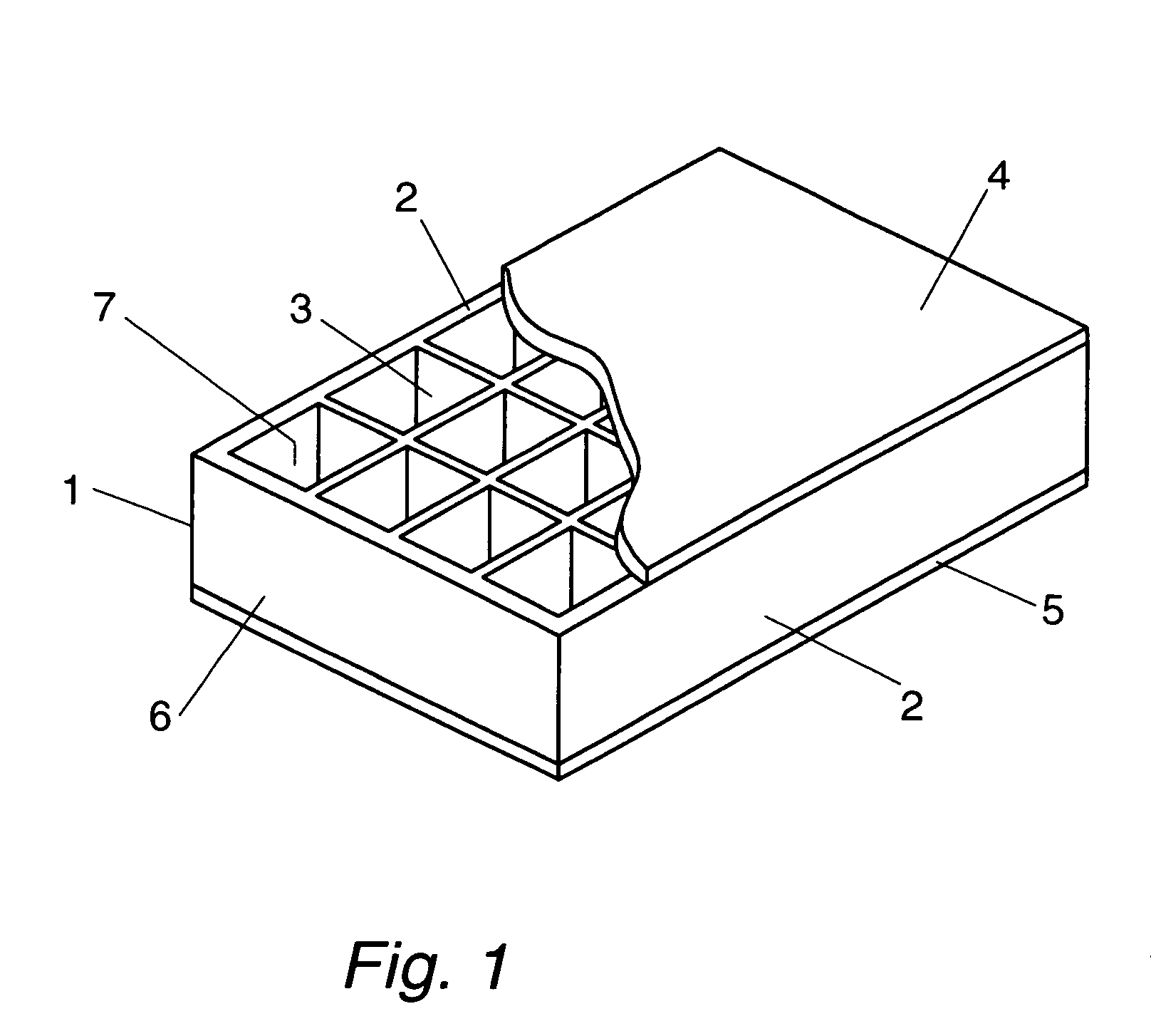Hollow cell bath soap
a technology of soap and bubbles, applied in the field of soap bars, can solve the problems of waste, waste, waste,
- Summary
- Abstract
- Description
- Claims
- Application Information
AI Technical Summary
Benefits of technology
Problems solved by technology
Method used
Image
Examples
Embodiment Construction
[0025]The soap bar of the present invention is constructed from a top cover, a hollow cell soap core and a bottom cover. Two or more adjoining elements may be used in construction each cover. The top cover and bottom covers may also be wrapped around to cover the side walls and end walls of the soap bar. The bar of soap is assembled by attaching the top cover to the top edge of the hollow soap core and by attaching the bottom cover to the bottom edge of the hollow soap core. The interconnection is completed by a variety of methods such as lamination, casting, dipping, spraying or pressure.
[0026]In FIG. 1, hollow core 1 is shown attached to bottom cover 5 and top cover 4. A portion of top cover 4 has been removed in the foreground for purpose of clarity. Hollow core 1 includes opposed parallel side walls 2 and opposed parallel end walls 6 which are interconnected to form a frame. Top cover 4 is attached to the top edge of every partition wall 3 and the top edge of every side wall 2 a...
PUM
 Login to View More
Login to View More Abstract
Description
Claims
Application Information
 Login to View More
Login to View More - R&D
- Intellectual Property
- Life Sciences
- Materials
- Tech Scout
- Unparalleled Data Quality
- Higher Quality Content
- 60% Fewer Hallucinations
Browse by: Latest US Patents, China's latest patents, Technical Efficacy Thesaurus, Application Domain, Technology Topic, Popular Technical Reports.
© 2025 PatSnap. All rights reserved.Legal|Privacy policy|Modern Slavery Act Transparency Statement|Sitemap|About US| Contact US: help@patsnap.com



